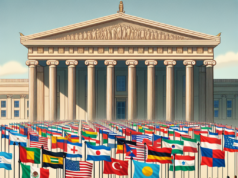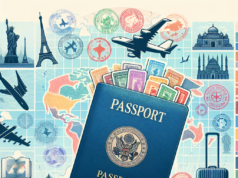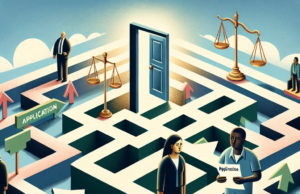
The debate surrounding immigration reform in the United States has reached a fever pitch, with various proposals igniting passionate discussions across the political spectrum. As lawmakers grapple with the complexities of immigration policy, the nation finds itself divided over the best path forward. This article delves into the current landscape of immigration reform, highlights key proposals, examines the political divide, assesses economic implications, surveys public opinion, and explores potential solutions for bridging the immigration divide.
Understanding the Current Landscape of Immigration Reform in the United States
The current landscape of immigration reform in the United States is characterized by a patchwork of policies and a growing urgency for comprehensive change. Over the past few decades, immigration has become a focal point of national discourse, with issues such as border security, pathways to citizenship, and the status of undocumented immigrants taking center stage. The COVID-19 pandemic further complicated matters, as travel restrictions and economic downturns prompted calls for reevaluation of existing immigration policies. As the nation emerges from the pandemic, the need for a cohesive and humane immigration strategy has become increasingly apparent, with various stakeholders advocating for reforms that address both humanitarian concerns and national security.
Key Proposals: An Overview of Controversial Immigration Reform Initiatives
Several controversial immigration reform proposals have emerged in recent months, each reflecting differing ideologies and priorities. Among the most discussed initiatives is the “DREAM Act,” which aims to provide a pathway to citizenship for undocumented immigrants brought to the U.S. as children. Conversely, some lawmakers advocate for stricter border security measures, including increased funding for border patrol and the construction of physical barriers. Additionally, proposals to reform the visa system, such as expanding work visas for skilled labor and addressing the backlog in family reunification applications, have sparked debate. These initiatives highlight the complexities of immigration reform, as they seek to balance humanitarian needs with economic and security considerations.
The Political Divide: How Immigration Reform Sparks National Debate
Immigration reform has become a deeply polarizing issue, reflecting broader ideological divides within American politics. On one side, progressive lawmakers and advocacy groups argue for more inclusive policies that prioritize human rights and social justice, emphasizing the contributions of immigrants to American society. On the other hand, conservative factions often focus on national security and economic protectionism, advocating for stricter immigration controls and enforcement measures. This political divide has led to gridlock in Congress, with bipartisan efforts frequently stymied by entrenched positions. As both parties grapple with their respective bases, the challenge of finding common ground on immigration reform remains a significant hurdle.
Economic Implications: Assessing the Impact of Proposed Immigration Changes
The economic implications of proposed immigration reforms are substantial and multifaceted. Proponents of more lenient immigration policies argue that immigrants play a crucial role in driving economic growth, filling labor shortages, and contributing to innovation. Studies have shown that immigrants are more likely to start businesses and create jobs, which can bolster local economies. Conversely, opponents of immigration reform often raise concerns about job competition and wage suppression for native workers. As lawmakers consider various proposals, it is essential to conduct thorough economic analyses to understand the potential impacts on different sectors and communities, ensuring that reforms are both economically viable and socially responsible.
Public Opinion: Surveying American Attitudes Toward Immigration Reform
Public opinion on immigration reform is varied and often reflects the complexities of individual experiences and regional differences. Recent surveys indicate that a significant portion of the American population supports pathways to citizenship for undocumented immigrants, particularly those who have lived in the country for years and have established roots in their communities. However, there is also a notable segment of the population that expresses concerns about border security and the perceived strain on public resources. These divergent views underscore the need for policymakers to engage with constituents and consider the diverse perspectives that shape American attitudes toward immigration. As public sentiment continues to evolve, it will play a critical role in influencing the direction of immigration reform efforts.
Moving Forward: Potential Solutions for Bridging the Immigration Divide
To bridge the immigration divide, a multifaceted approach that prioritizes dialogue, compromise, and evidence-based policy is essential. Lawmakers must engage in constructive conversations with stakeholders from various sectors, including business leaders, community organizations, and immigrant advocacy groups, to develop comprehensive solutions that address the needs of all parties involved. Additionally, fostering bipartisan cooperation will be crucial in overcoming entrenched positions and finding common ground. Potential solutions may include a combination of enhanced border security measures, streamlined pathways to citizenship, and reforms to the visa system that reflect labor market demands. By prioritizing collaboration and inclusivity, the nation can work toward a more equitable and effective immigration system.
As the debate over immigration reform continues to unfold, it is clear that the path forward will require careful consideration of diverse perspectives and a commitment to finding solutions that benefit both individuals and society as a whole. The challenges are significant, but with a concerted effort to bridge divides and foster understanding, the United States can move toward a more just and effective immigration policy that reflects its values and aspirations.


























